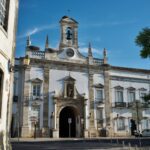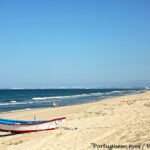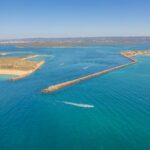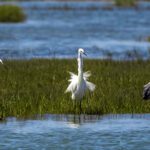Welcome to Ria Formosa Natural Park, a vibrant wetland paradise cherished by nature lovers and hundreds of bird species.
Our own Ria Formosa Birdwatching Tour is one of our most popular excursions, so we know this avian wonderland inside out.
If you’re an avid birdwatcher, this ecological gem nestled in Portugal’s spectacular Algarve coastline is an absolute must-visit.
Join us as we take a closer look at this incredible destination and just some of the many captivating bird species that call it home.
If you have questions about any of our Ria Formosa boat tours, please don’t hesitate to get in touch.
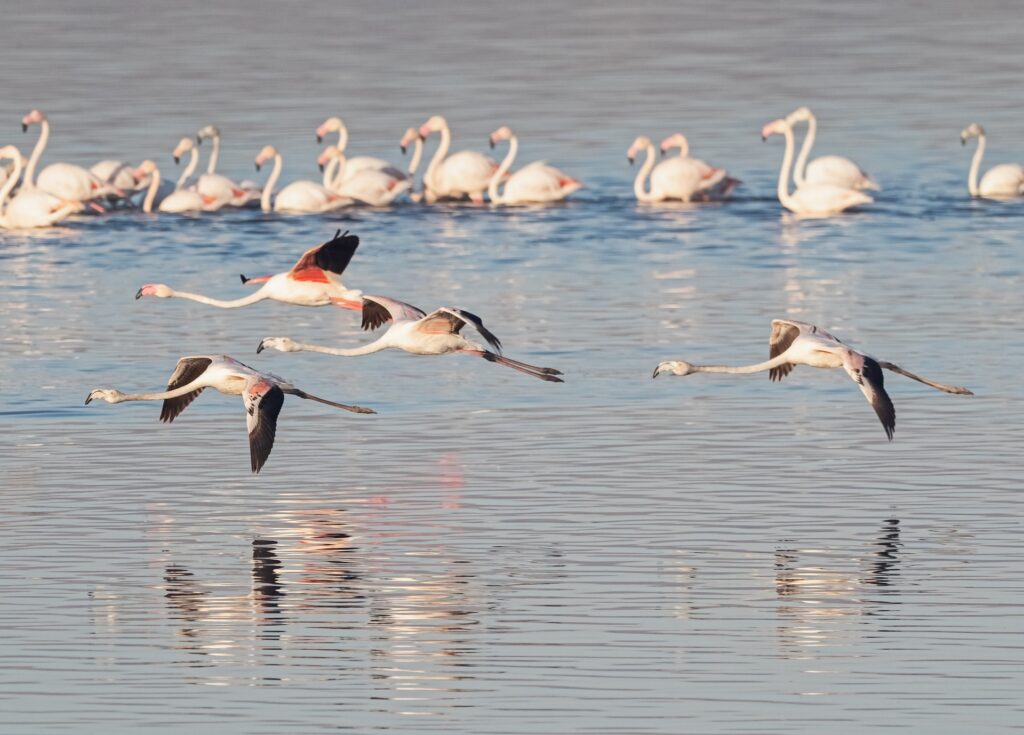
Ria Formosa is a Natural Oasis for Birds
Before we look at some of the birds that inhabit Ria Formosa, let us quickly introduce this remarkable place.
Stretching across 18,000 hectares, Ria Formosa Natural Park is a UNESCO-designated Biosphere Reserve and a Wetland of International Importance (or Ramsar Site).
This protected reserve extends over 60km of the Algarve coastline and is renowned for its rich biodiversity.
Its mosaic of lagoons, salt pans, marshes, sand dunes, and beaches provides a diverse range of habitats, attracting a staggering number of bird species throughout the year.
Over 200 species have been recorded in this natural sanctuary!
Of course, we can’t mention them all in a single blog, so we have picked out some of the species that you are most likely to see.
And for even more travel inspiration, check out our tips for the best things to do in Faro.
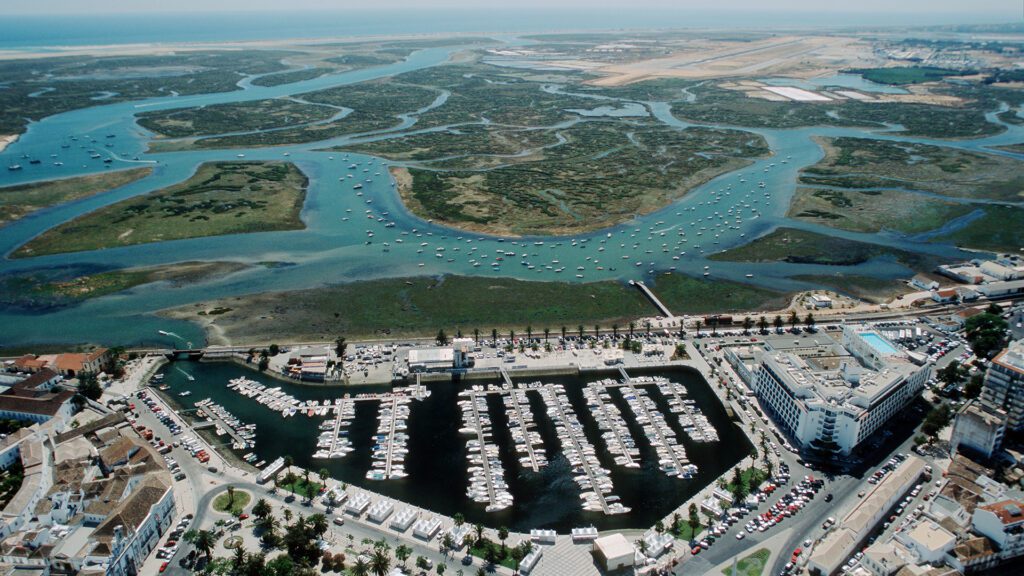
What Birds Can I See in Ria Formosa Natural Park?
White Stork (Ciconia ciconia)
With their striking black-and-white plumage and graceful soaring flights, White Storks are a symbol of good fortune and a majestic sight to behold.
Keep your eyes peeled for their huge nests perched in treetops!

Little Egret (Egretta garzetta)
Dainty yet elegant, the Little Egret has pristine white plumage and a slender black bill.
Watch them as they wade through shallow waters with delicate strides, searching for small fish and invertebrates to feast upon. Their hunting techniques are a true spectacle!
After you’ve absorbed all the knowledge on our birdwatching tour, explore from a different perspective with a Ria Formosa kayak tour.

Spoonbill (Platalea leucorodia)
Prepare to be enchanted by the unmistakable Spoonbill!
These wading birds have a long, spoon-shaped bill that serves as a remarkably efficient tool for sifting through the water to find tasty morsels.
Don’t forget your camera to capture their peculiar feeding antics!
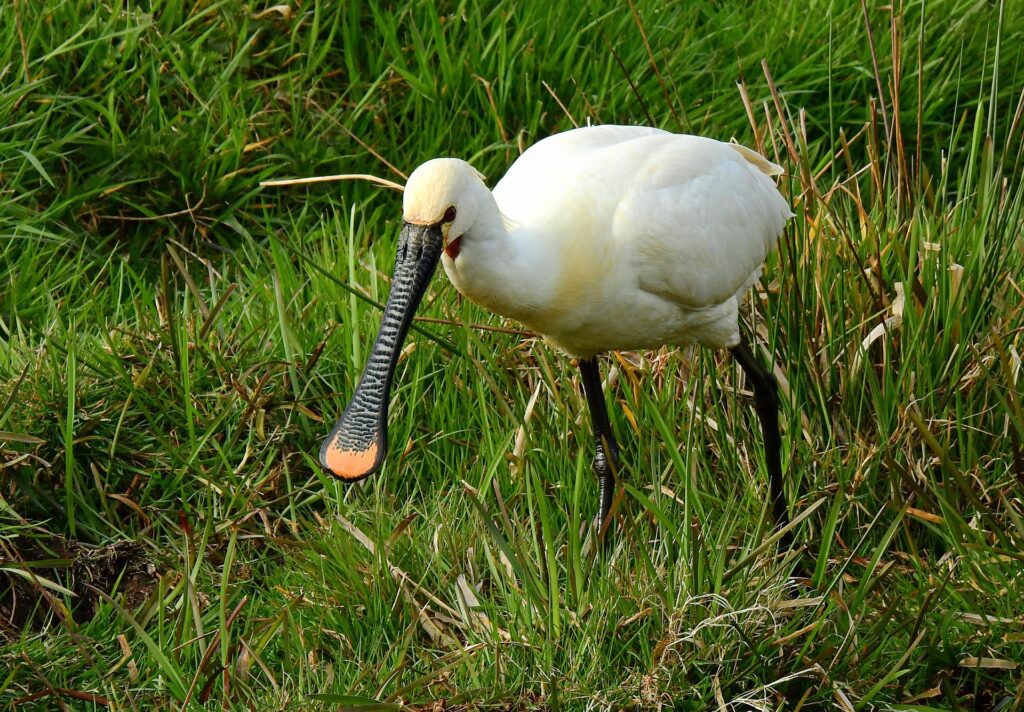
Whimbrel (Numenius phaeopus)
Whimbrels — along with Turnstones and Grey Plovers below — are a constant presence in Ria Formosa.
These medium-sized shorebirds boast long, curved bills, which they expertly use to probe for crustaceans, worms, and other delectable prey.
Witness their elegant foraging dance as they navigate the tidal flats.
Are you looking for a truly personal experience in Ria Formosa? We think you’ll love our private boat charter in the Algarve.
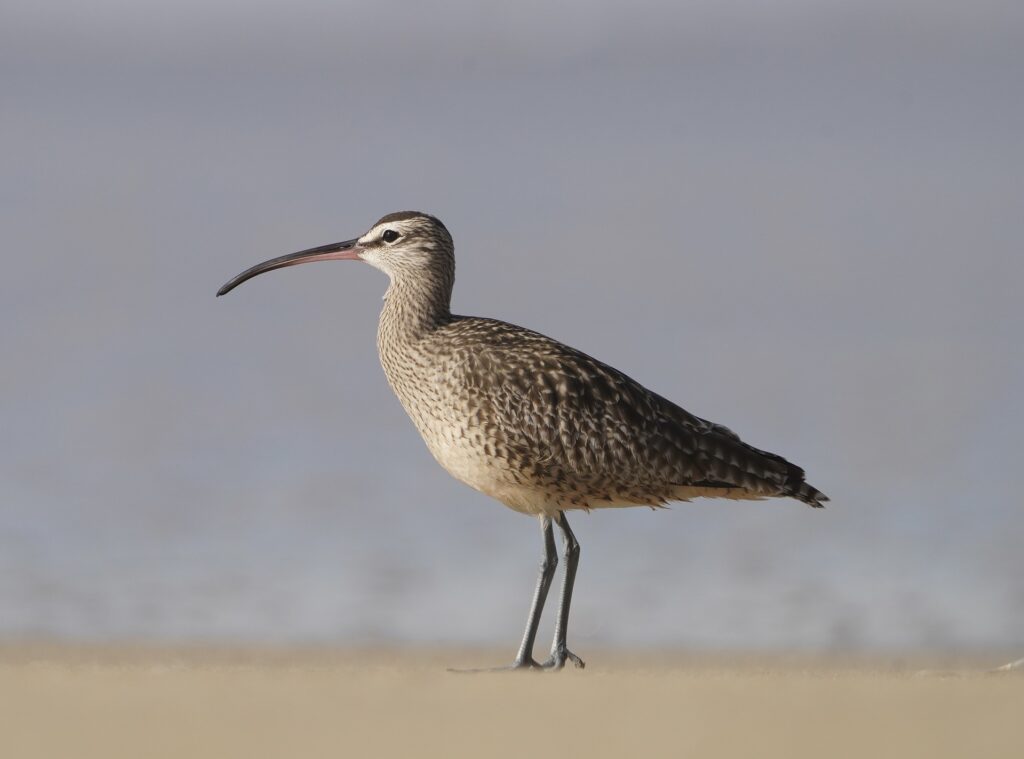
Turnstone (Arenaria interpres)
Ever the acrobats of the shore, Turnstones live up to their name with incredible agility.
Their penchant for flipping pebbles and seaweed to uncover hidden invertebrates is an absolute delight to witness.
Their vibrant plumage, featuring a mosaic of orange, black, and white, adds a splash of colour to the coastal scenery.

Grey Plover (Pluvialis squatarola)
In their striking winter plumage, Grey Plovers captivate birdwatchers with their intricate patterns of black, white, and grey.
These sturdy shorebirds can be seen probing the sand and mud for worms and molluscs, showcasing their expert feeding skills and resilience against the elements.
If you’re unsure what to do when you return to Faro after your tour, find some inspiration in our previous blog Best Things to Do in Faro at Night.
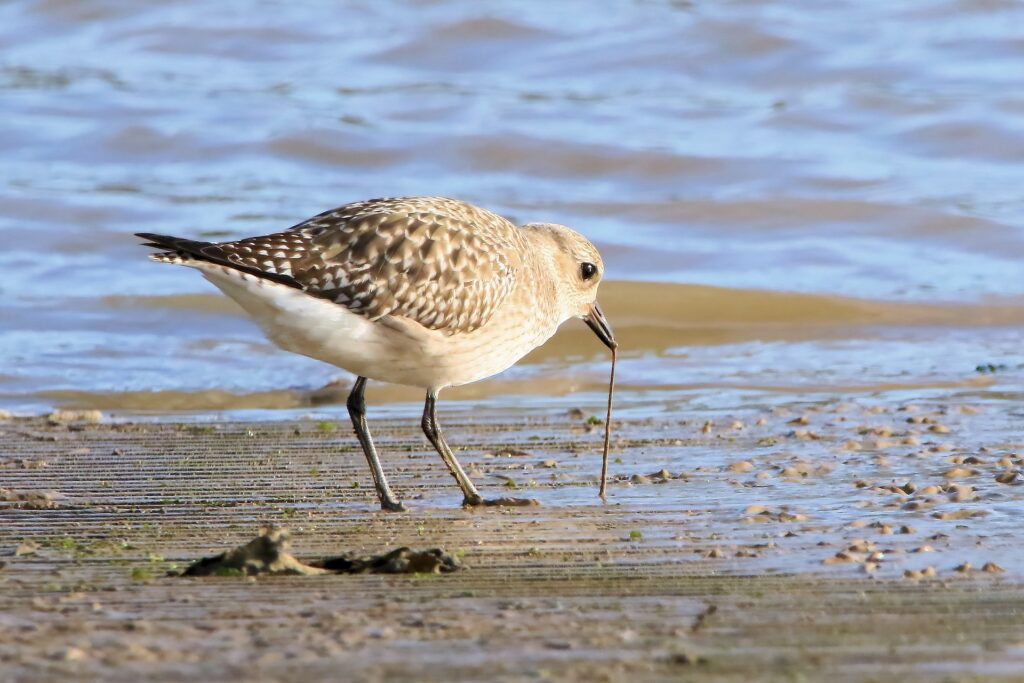
Black-tailed Godwit (Limosa limosa)
Marvel at the elegance of the Black-tailed Godwit! These medium-sized waders display a delightful mix of russet, brown, and grey plumage.
Blessed with long bills, they deftly probe the soil for invertebrates, demonstrating their mastery of the feeding arts.
Keep an eye out for their beautiful courtship displays during the breeding season.
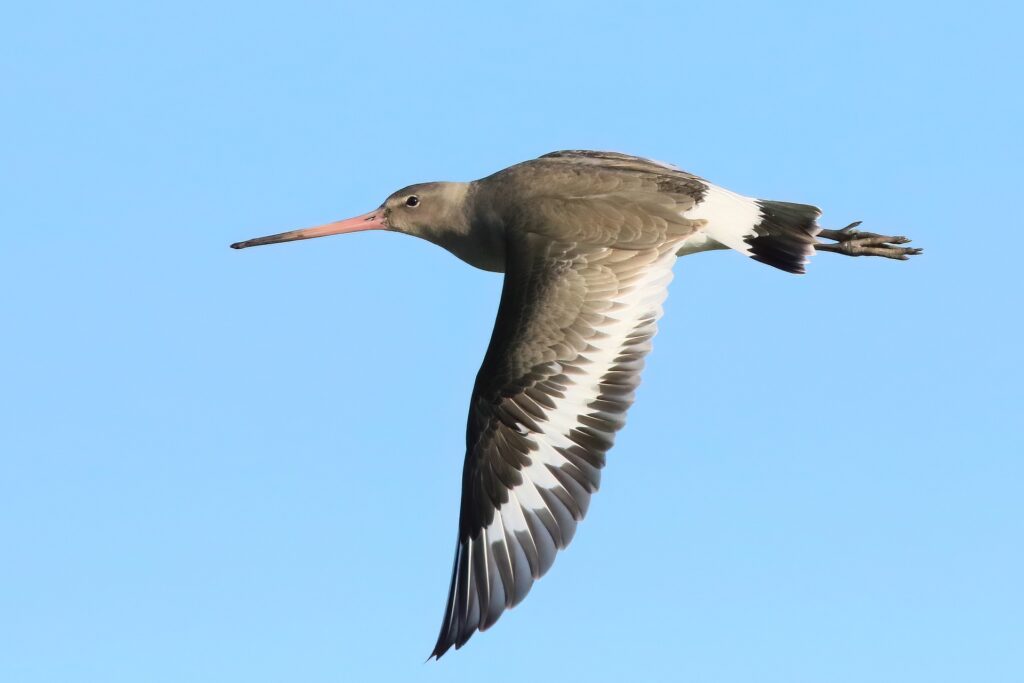
Oystercatcher (Haematopus ostralegus)
With their unmistakable long, red-orange bills and piercing calls, Oystercatchers are true beachcombers.
These charismatic birds expertly pry open shells to feast on the molluscs inside.
Watch them manoeuvre along the shoreline, leaving their distinctive footprints in the sand.

Little Tern (Sterna albifrons)
Prepare to be dazzled by the aerial acrobatics of the Little Tern! These small seabirds display remarkable agility as they dive headfirst into the water, hunting for small fish.
Their graceful flights and distinctive calls are an enchanting addition to the coastal landscape.
After exploring Ria Formosa on a birdwatching tour, you may want to visit some of the area’s best beaches.
Read our blog about the best beaches in Faro for recommendations from locals!
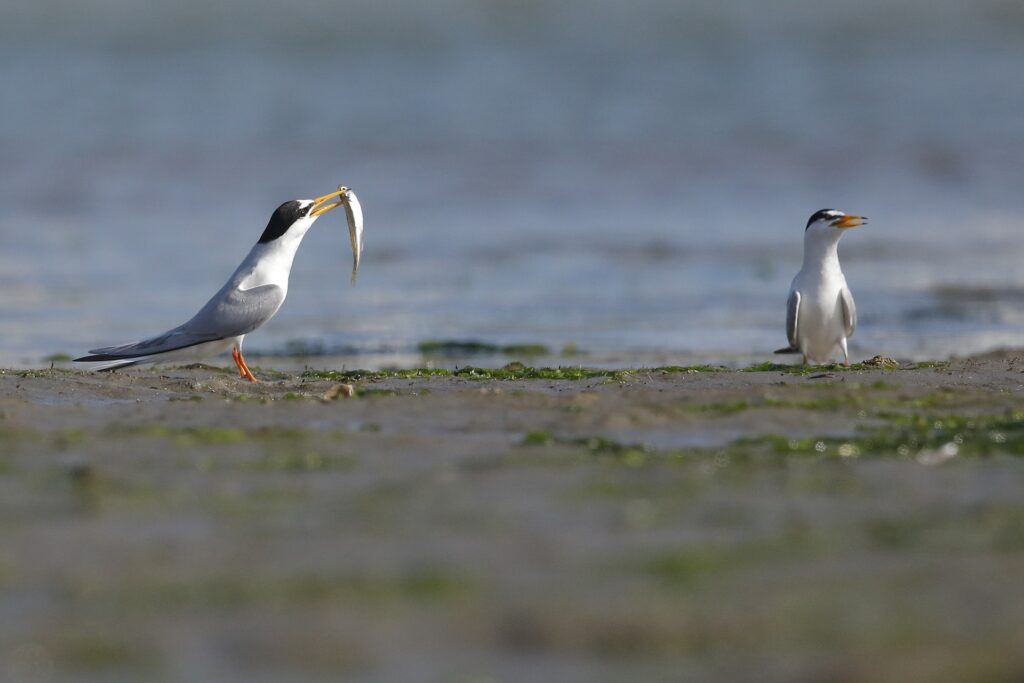
Kentish Plover (Charadrius alexandrinus)
Meet the dapper Kentish Plover, a small shorebird with a penchant for lagoons and sand beaches.
With a distinctive broken black collar, sandy plumage, and snow-white face and underparts, these birds have more of a subtle beauty.
Observe their comical run-stop-forage routine as they hunt for insects and crustaceans in the sand.
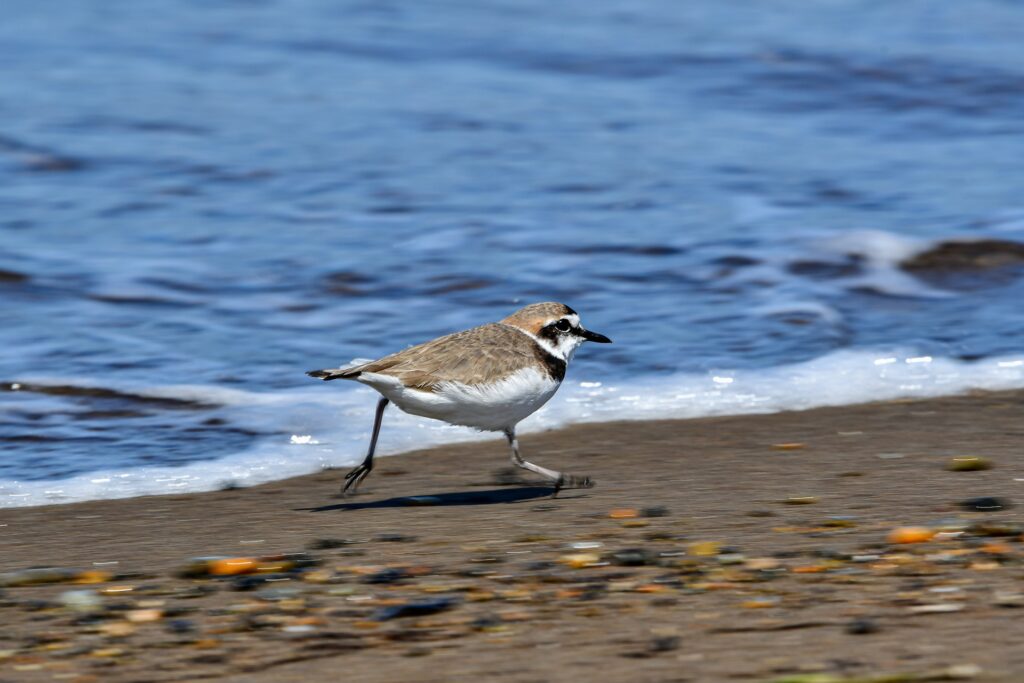
Sandwich Tern (Sterna sandvicensis)
Prepare for a captivating display of avian prowess as the Sandwich Tern takes centre stage.
Their striking black caps and yellow-tipped black bills distinguish them from other tern species.
Watch in awe as they plunge into the water with remarkable precision, emerging with fish firmly grasped in their beaks.
Sandwich Terns aren’t a year-round presence. We see them most during the wintertime.
Are you planning a winter trip? Read our recommendations for the best things to do in the Algarve in winter.

Greater Flamingo (Phoenicopterus roseus)
No visit to Ria Formosa is complete without a glimpse of the flamboyant Greater Flamingos.
These majestic birds, with their tall legs and vibrant pink plumage, create a scene reminiscent of a tropical paradise.
These flamingos don’t breed in Ria Formosa as they are a migratory species. Like the Sandwich Tern, the peak viewing season is between November and March.
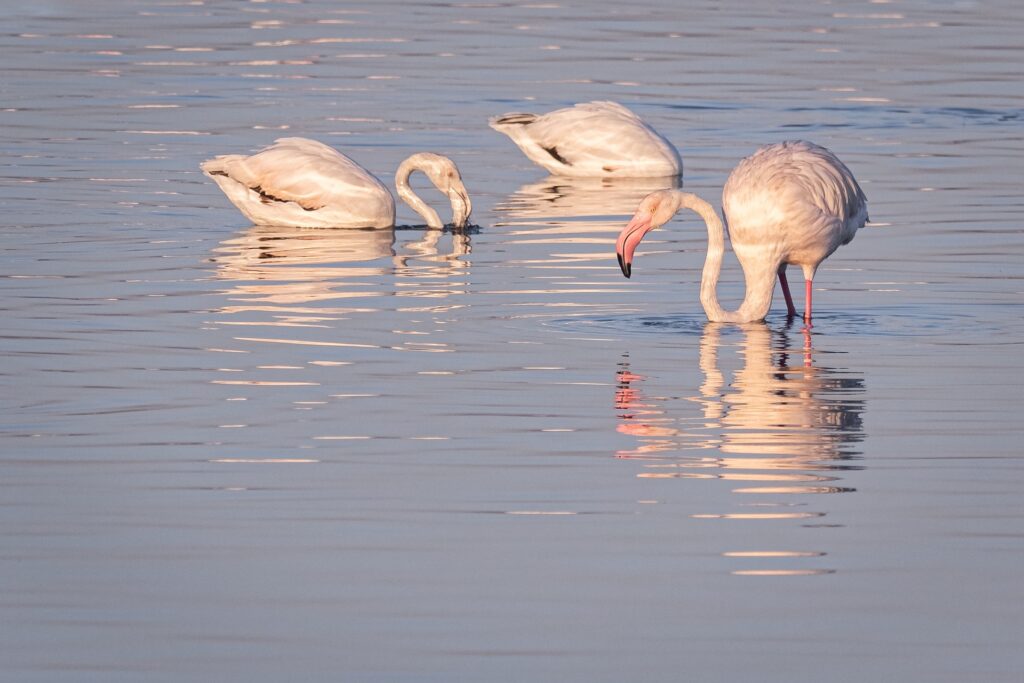
Join Us for a Fun and Fascinating Birdwatching Tour in Ria Formosa!
We hope this birdwatching guide to Ria Formosa has inspired you to visit this breathtaking place on Faro’s doorstep.
At Formosamar, we love sharing our passion for this special reserve and creating unforgettable birdwatching experiences.
Read about our Ria Formosa Birdwatching Tour and discover more about the adventure that’s waiting for you.
Do you have any questions for us? Please get in touch for all the answers you need.



